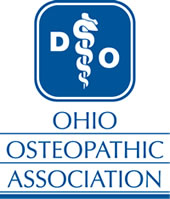State Launches Public Awareness Campaign to Promote Naloxone in Select Counties
CDC Recommends Expanding Availability
(May 13, 2016) A targeted campaign launches next week to raise awareness about the signs of a drug overdose and to urge family members and friends of people who use drugs to obtain the opiate overdose reversal drug naloxone to administer during an overdose while waiting on first-responders to arrive.
The campaign is focused on 15 counties that accounted for 80 percent of Ohio’s fentanyl-related overdose deaths in 2014. Those counties are Butler, Clark, Clermont, Cuyahoga, Franklin, Hamilton, Lorain, Lucas, Marion, Montgomery, Ross, Scioto, Stark, Summit and Warren.
Ohio has seen a major increase in overdose deaths involving fentanyl, a synthetic narcotic used to treat severe pain that in its prescription form is estimated to be 30 to 50 times more potent than heroin. Ohio had 503 fentanyl-related overdose deaths in 2014 compared to 84 in 2013. This campaign is a collaboration between the Ohio Department of Health (ODH) and the Ohio Department of Mental Health and Addiction Services (OhioMHAS).
“Drug users may not know when illicit fentanyl has been combined with other drugs like heroin, and they can overdose and die quickly,” said ODH Medical Director Mary DiOrio, MD. “The use of naloxone as quickly as possible is vital to saving lives during all opiate overdoses – but it is especially critical during overdoses involving fentanyl because it can kill quickly. And because of its toxicity, fentanyl overdoses may require more than one dose of naloxone, so it’s critical to call 911 immediately.”
The public awareness campaign includes two billboards; carry naloxone and know the signs, a radio spot, and mobile and digital ads. They direct people to a website at stopoverdoses.ohio.gov for more information, including how to obtain a naloxone kit without a prescription at participating pharmacies, or through Project DAWN (Deaths Avoided with Naloxone) community programs supported by ODH.
ODH requested assistance from the Centers for Disease Control and Prevention (CDC) to better understand Ohio’s rise in fentanyl-related overdose deaths and how to combat them. After visiting Ohio last fall, CDC issued its report in March, which noted Ohio’s comprehensive approach to the opiate crisis and included recommendations to expand the availability and use of naloxone in the community, and to target public health responses to high-burden counties.



